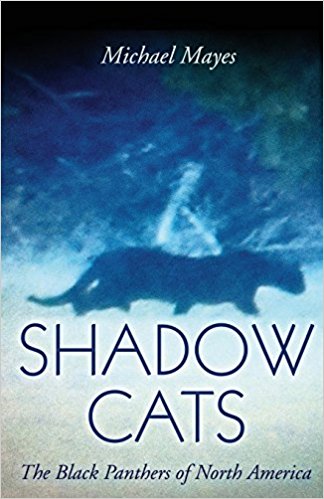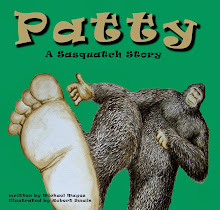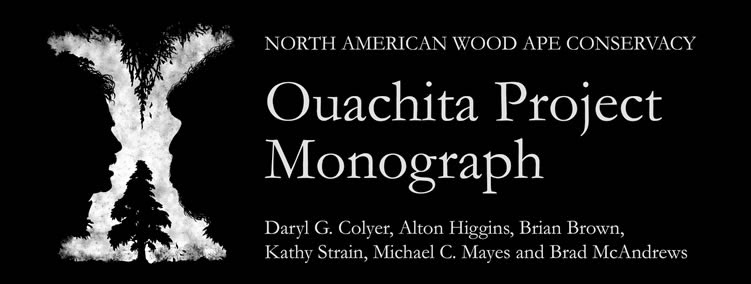
Reports of large black cats continue to roll in weekly from around the state. Most of the accounts come from people living in the woods and river bottoms of the Eastern portion of the state; however, some reports have come in from Central and West Texas as well. Science tells us that there is no such thing as a black panther. It simply doesn't exist.
But is this true?
The only big cats that are sometimes melanistic are leopards and jaguars; neither of which are found in Texas. People claiming to have seen large black cats are told they have misidentified a known animal of some sort. Others are simply dismissed as hoaxers, nuts, or liars. Case closed. There is no such animal.
But is this true?
Some who claim to have seen a black panther seethe at the condescending attitude of wildlife officials. Other witnesses simply shrug their shoulders, not caring what others think and secure in their knowledge of what they saw, and go on about their business. It seems this dilemma is not unique to Texas, however. Indigenous people in various parts of the world have claimed sightings of large black cats for generations. Government and wildlife officials in these locales have taken much the same position as officials in the U.S. That is, with the exception of jaguars and leopards, there are no large black cats roaming the mountains, jungles, or plains of the planet. Native people who see these animals are dismissed as uneducated, superstitious, mistaken, or victims of mass hysteria.
But is this true?
The serval is medium-sized cat distributed widely across Africa south of the Sahara Desert. They are spotted cats with large ears. Their coats appear a bit cheetah-like. For decades locals living in the mountainous regions of Kenya claimed to be seeing black servals. These reports were not taken seriously until fairly recently. It has now been documented that melanistic servals do exist. They are confined almost exclusively to elevations higher than 3,000 feet. It is theorized that the black coloration is an adaptation to help conserve body heat in these higher elevations. As servals hunt almost exclusively at night, another theory is that the melanism is becoming more common as an adaptation to their nocturnalism. I don't buy into this theory much as servals found in lower elevations are nocturnal as well and do not exhibit melanism. The point is that servals can be black. The indigenous people were right all along.

Some would say the melanistic serval is just an anomaly. Other than jaguars and leopards...and now servals, there are no melanistic big cats.
But is it true?
Let's travel to the sub-continent of India. Black leopards are not unusual and are celebrated in Indian mythology and literature. European novelist Rudyard Kipling even included a black panther, named Bagheera, in his famous collection of stories,
The Jungle Book. What is not as well known, however, is that tales of black tigers have long been told in India as well. It has long been assumed that cats described as black tigers were actually leopards. This is likely true in many cases; however, some black tiger sightings are not so easy to dismiss as having been melanistic leopards. Probably the most famous account of a black tiger comes from naturalist C.T. Buckland. His account was published in an 1889 issue of the
Journal of the Bombay Natural History Society. In brief, a black tiger, alleged to have killed a villager near Chittagong, was killed by a local with a poisoned arrow. Upon hearing the news, Buckland and several colleagues travelled to the location to observe this unusual specimen. Buckland described his experience as follows:
"I remember perfectly well that the body of the animal was lying in the low bush jungle about twenty yards south of the road, and we dismounted to go and look at it. It was a full-sized tiger, and the skin was black or very dark brown, so that the stripes showed rather a darker black in the sunlight, just as the spots are visible on the skin of a black leopard. I was young and inexperienced, but Captain Swatman, who was in charge of the Government elephant kheddas, and Captain Hore (afterwards Lord Ruthven), of the 25th N.I, were well-known sportsmen, and had each of them killed many tigers. No doubt was expressed about the animal being a black tiger..."

Another well-known story has an even earlier origin. Artist James Forbes, described a black tiger he saw in 1773 while he was in the employ of the British East India Company. He stated:
"I have also the opportunity of adding the portrait of an extraordinary Tyger [sic], shot a few months ago by the Nairs (a group of Hindu warriors) in this neighborhood, and presented to the chief as a great curiosity. It was entirely black yet striped in the manner of the Royal-Tyger, with shades of a still darker hue, like the richest black, glossed with purple. My pencil is very deficient in displaying these mingled tints; nor do I know how to describe them better than by the difference you would observe in a black cloth variegated with shades of a rich velvet."
Forbes did a watercolor painting of the subject but it has been lost over time.

So where is the proof? Most of the evidence supporting the existence of melanism in tigers comes out of the Simlipal Tiger Preserve. The area has become quite well-known for it's melanistic tigers. Most display what is referred to as pseudo-melanism. Most tigers exhibiting pseudo-melanism have abnormally wide stripes. The wide black stripes grow together obscuring the usually dominant gold/orange color of the animal. These animals, while not totally black, certainly show melanism occurs in tigers. Some examples of tigers exhibiting pseudo-melanism are shown in the photos below.


So, pseudo-melanism is possible in tigers but that is a far cry from a completely black tiger, it is argued. It doesn't happen. People reporting such are only seeing black leopards or pseudo-melanistic tigers in poor light conditions.
But is this true?
To find the answer we go back to Simlipal. In 2007, an
article in the Indian newspaper
The Hindu documented the existence of three melanistic tigers withing the borders of the preserve. The tigers were documented via camera-trap during a tiger census project. The tigers were described as having a light brown coat with jet black stripes by Chief Wildlife Warden Suresh Mohanty. Amazingly, the existence of melanistic tigers in the park was described as, "usual" by Mohanty. In addition, the former Chief Wildlife Warden for the preserve, Kumar Patnaik, said that black tigers were spotted back in 1993 and again in 2004.

In addition, take a look at this
video on Siberian tigers. It is rather lengthy but fast forward to the 1:40 mark and hit play. The tiger on the far left is solid black. The cat that is second from the left seems to be exhibiting pseudo-melanism as it's hindquarters look black. The picture above and the video of these Siberian tigers seem to prove once and for all that true black tigers do exist.
Yet, wildlife officials here in the states continue to say that black panthers are an impossibility here in North America. Other than jaguars, leopards, servals, and, now, tigers there are no melanistic big cats in the world.
But is this true?
What about here in the United States? Of the big cats generally recognized to still live within the contiguous 48 states, cougars, bobcats, lynx, ocelot, and jaguarundi; only the jaguarundi is thought to show melanism. Oops, did I just add another candidate to our list of melanistic big cats? I guess I did. Could another be added? How about the photo below? The photo was taken in Florida and shows a melanistic bobcat.

So our list of big cats known to show melanism needs to expand yet again. Jaguars, leopards, servals, tigers, jaguarundi, and bobcats all exhibit melanism on occasion. While no melanistic cougar has ever been officially documented is it really an impossibility? Wildlife officials would tell you that is the case.
But, I would ask you once again, is this true?
 I just wanted to pause and wish everyone out there a Merry Christmas. I pray it is a blessed and peaceful time for you and your family.
I just wanted to pause and wish everyone out there a Merry Christmas. I pray it is a blessed and peaceful time for you and your family.































































